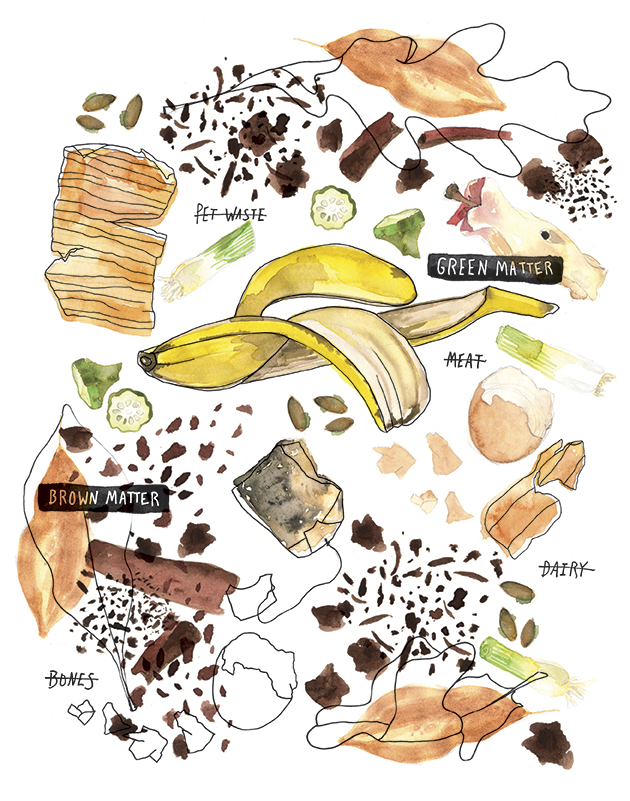It has been said that the path to a garden of one’s dreams leads right through the middle of the compost pile.
Compost — a gardener’s black gold — is a magic additive that will give life to fruit, vegetable or flower gardens. With a few tips and pointers, a gardener can create a wonderful and beneficial compost heap using only yard waste and select kitchen scraps.
Compost consists of partially decomposed organic matter and a host of microbes and bacteria responsible for breaking down plant material. As plant material breaks down gradually, soil organisms slowly release nutrients at a rate that plants can use. Although tons of ideas and theories exist on how to compost, this is how I have been successful.
The first consideration for a compost pile is location. Select a spot that is well-drained and receives sufficient sunlight to add warmth for microbial activity to occur. At my home, I situated my compost pile at the edge of my yard against a forested edge. I used a few freely available pallets, stood on their ends, to create a vented wall for holding in plant materials.
After selecting a spot, loosen the ground where the compost will go to facilitate worm access to the added organic materials. Worms will speed up breakdown processes and also provide worm castings that are excellent for compost and will make vegetables grow even better.
I use all the plant materials from my yard that I can. From garden and flower bed weeds to trimmings from shrubs and small trees, it all gets added. In autumn, leaves — particularly oak species — provide the most important component of a compost pile and are loaded with plant-essential nutrients. All the leaves should be shredded to eliminate the risk of foul-smelling anaerobic bacteria and to not smother aerobic processes that a compost heap demands. I also use biodegradable waste from the kitchen — with the exception of meat or bones. The best compost additions from the kitchen are nitrogen-rich spent coffee grounds. Egg shells are also great. Just be sure to crush them when you add them for a faster breakdown.
In general, two types of compost additions exist — brown compost, the source of carbon, includes straw, autumn leaves and other dried-out plant parts; and green compost, the source on nitrogen, includes fresh plant material. Composting will occur most efficiently when the ratio of 30 parts carbon to one part nitrogen, by weight, is maintained. Aim for that ratio, add all the shredded leaves possible and be on the way to the best compost pile ever.
Although some compost guides suggest layering brown and green compost in the pile, often explained as creating a “garden lasagna,” I don’t recommend this method. Instead, I visit my compost piles as often as I can and keep the materials thoroughly mixed using a pitchfork to ensure an even-distribution of bacteria, microbes and moisture.
With only two inches of yard-waste compost added each year, the plants will have access to all the nutrients and protection from disease they require. Compost is a must-have to an avid gardener — plus, it’s free to create and takes minimal effort. If you have questions about composting, send me an email at outside@thesipmag.com.
Bring your pitchfork to a gardener’s heaven!

